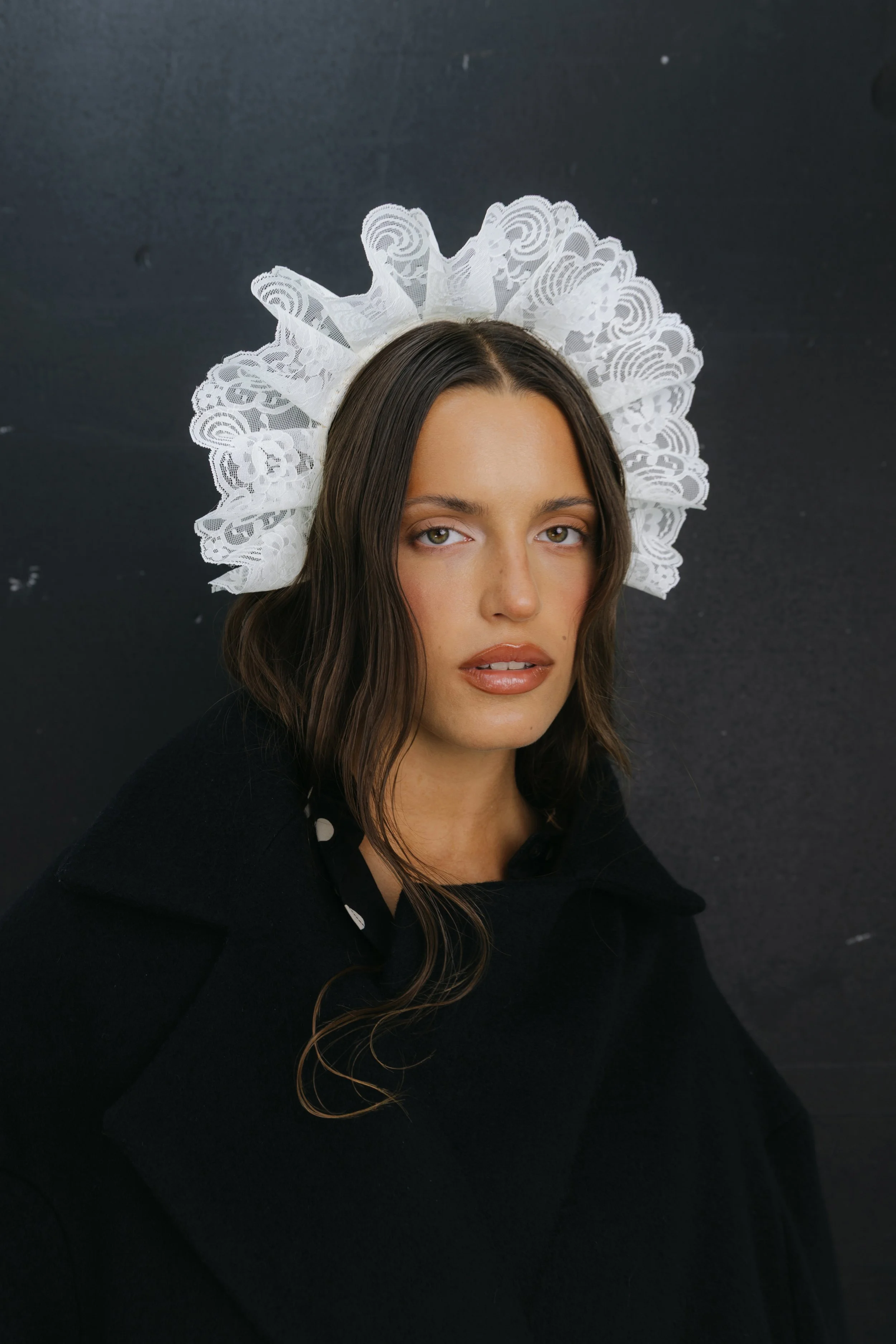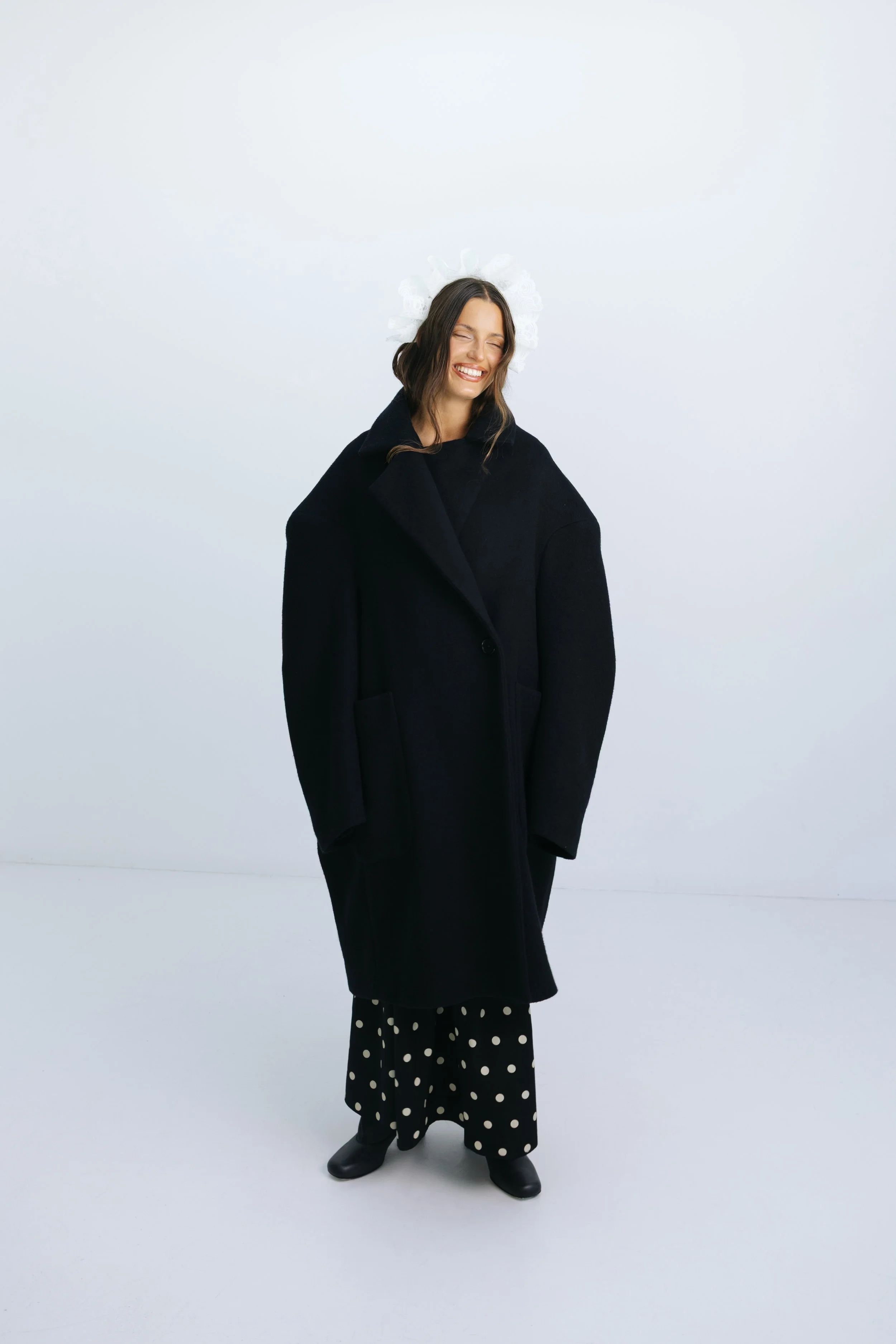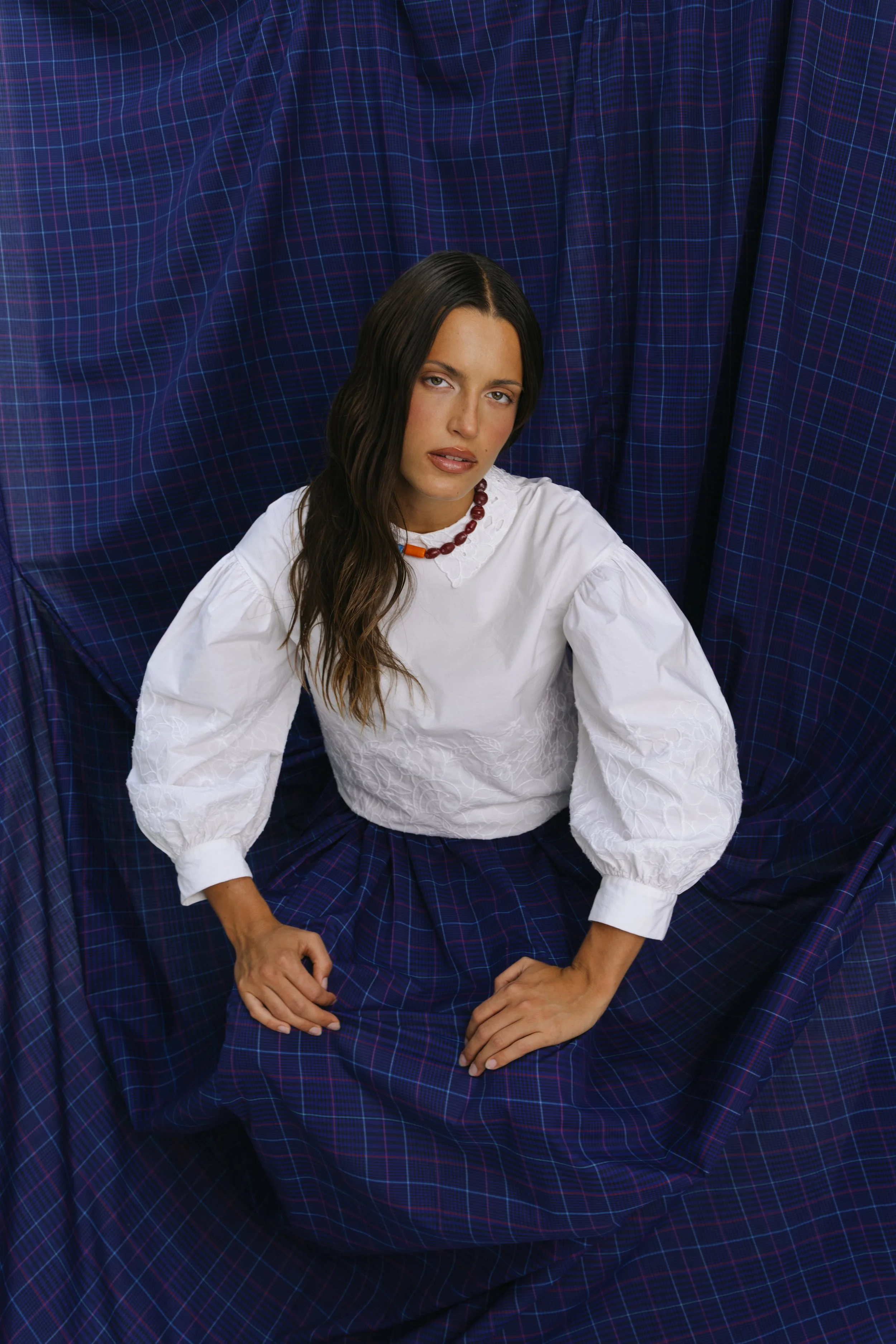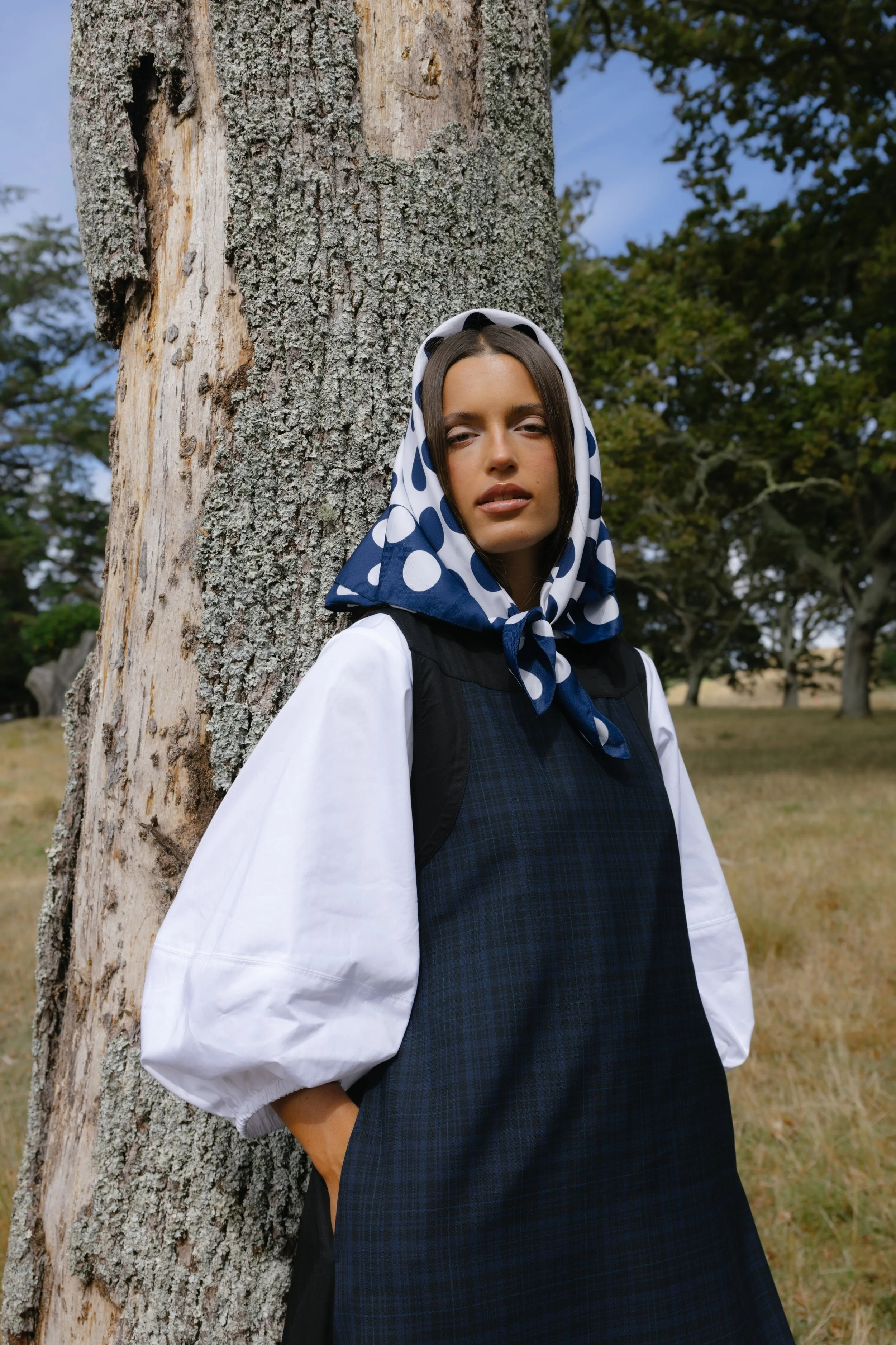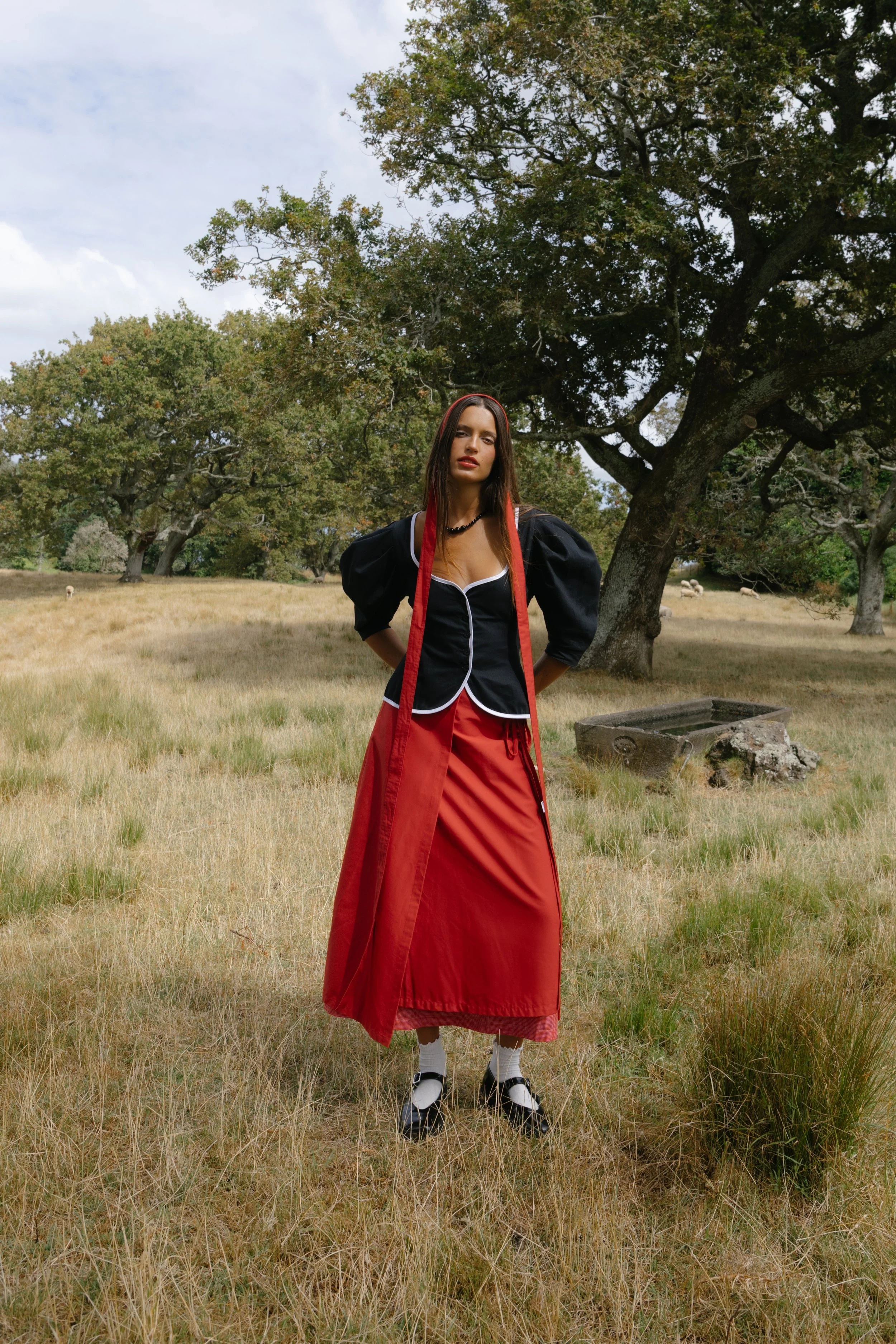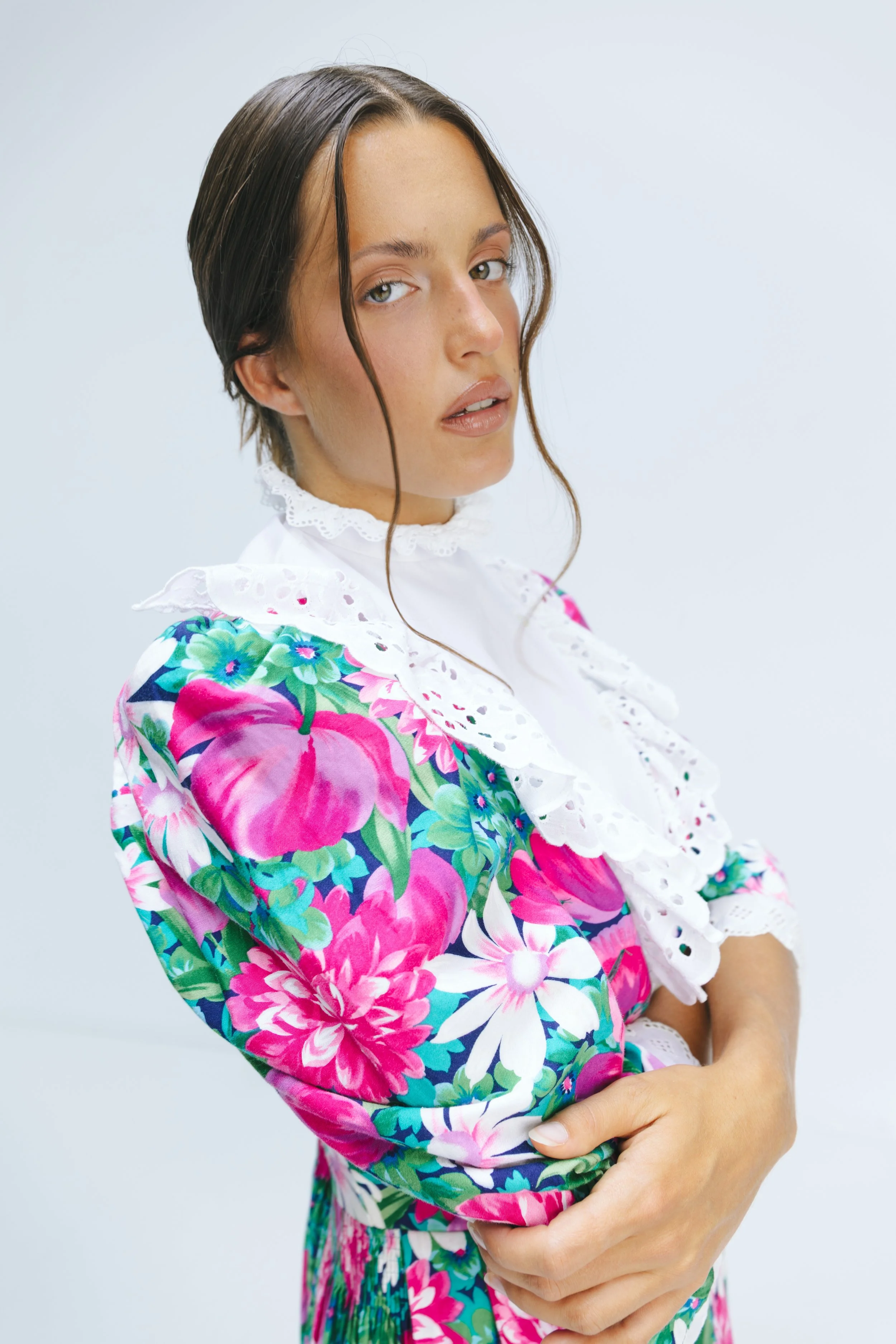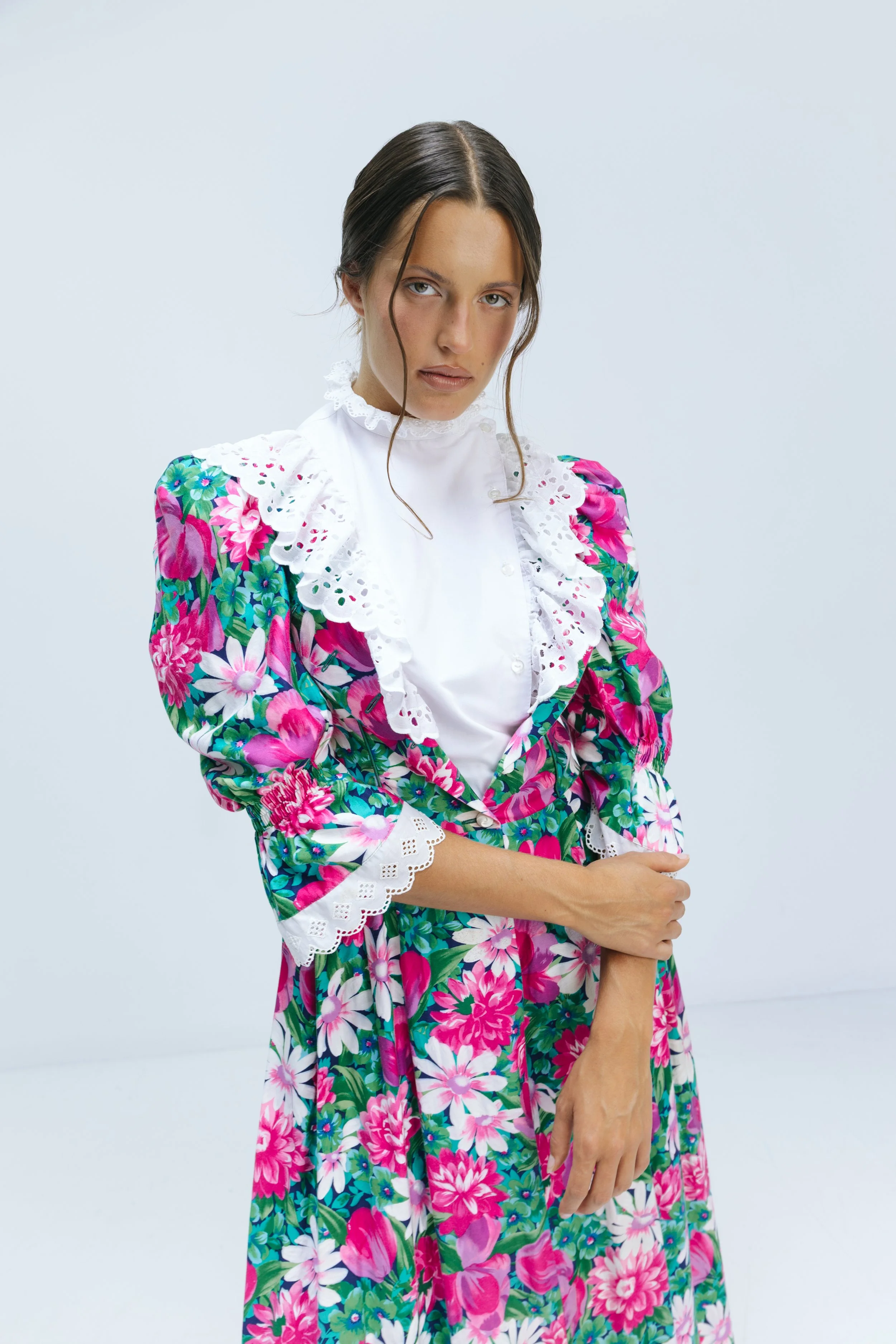Sauce Shoots: Threads of Heritage
When I first met Anya she already had the idea for this shoot, so it was only a matter of time before we got the right team together and made something special. On a sunny morning in February, after a couple of months of planning, we created these images — both a celebration and an exploration of what our Slavic heritage means to us. We felt that the images would be even more powerful with a few words from everyone on the team about their sense of cultural identity.
Yana
Photography and Creative Direction: Anastasiya Konstantine
Styling: Yana Kulishenko
Model: Natalie Pejcic, 62 Management
Makeup and Hair: Shane Cyrus
Assisted by: Taarika Orange
YANA
Could you tell us a bit about the move to Aotearoa and the effect this had on your perception of your cultural identity?
I moved to Auckland from Kharkiv, Ukraine when I was 12. In 2015 the eastern part of the country was already unsafe, so my parents decided to come to Aotearoa in a search of a better future for me and my younger brother. Prior to my move I spent a lot of time with my grandmother, travelling around the country and passively absorbing cultural knowledge. I was probably much too young to comprehend what having a cultural identity meant, but I have always felt a sense of belonging and pride while walking down the cobblestone roads in Lviv, watching women weave flower wreaths in Vinnytsia, or just observing quintessential Slavic grandmas gossip on the bench outside my apartment building in Kharkiv.
I think for the first few months in Tamaki Makaurau I was in a constant state of shock. It’s almost as if I was moving through space without actually experiencing any of what was happening. I could sense that I was an outsider but didn’t have the mental capacity to put my feelings into words. Being surrounded by breathtaking landscapes, friendly strangers (probably much friendlier than Easter Europeans if I am being honest) and a plethora of opportunities that would have never been available to me if I had stayed in Eastern Ukraine somehow fell short.
Eventually, the big immigrant-identity-shaped void grew smaller. Ten years, one permanent residency and one citizenship later, I no longer feel alienated, but I still don’t feel quite at home. Over the past few years, my longing for Ukraine has grown stronger. I’ve become more interested in tracing my ancestry and uncovering stories from my family’s past, likely fuelled by both the development of my prefrontal cortex and my fragmented sense of self. I am very lucky and grateful to be living on Māori land getting to pursue my passions. Learning about Te Ao Māori since immigrating has been eye-opening. I look forward to seeing how my eclectic mix of lived experience and embodied cultural knowledge will manifest in my work in the coming years.
What are some of your fondest memories of your motherland?
Ukrainian culture is so incredibly rich in tradition, so it’s difficult to pick a favourite. If I had to choose, I would say it’s the Ivan Kupalo Night.
Every summer I would catch the train to Vinnytsia with my grandma and stay there for a few weeks with her sisters. We would often go in late June to catch the Ivan Kupalo celebrations. It’s one of the major folk holidays in many Slavic countries and there are a few rituals associated with it, one of which is a tall bonfire. I remember people jumping over the bonfire while holding hands as a symbol of purification before spending the rest of the night dancing and singing. The fact that I was allowed to stay past my bedtime as an 8-year-old definitely amplified the appeal. And yes, one time I saw someone fall into the bonfire, but they were promptly rescued and looked happy as ever the following day.
Natalie wears the Luna Skirt and Nova Shirt by Kowtow with the Adrion Atelier Hoffman Coat and Paloma Wool Jolie Snaps boots.
Natalie wears a custom skirt by Danyela Pezic, vintage blouse from GoJo Recycled and the Paloma Wool Mirabella necklace.
SHANE
How do you feel when you meet someone who shares your cultural background in Aotearoa?
It wasn’t actually until this past year, while working on a photoshoot, we began the day by sharing our whakapapa and where we were from. As the circle went around, a beautiful woman from the agency across from us spoke up, identifying herself as “Bohemian.” It was the first time in my life I had heard someone use that term outside of my own family. Without thinking, I immediately replied, “Me too!” The room fell silent, and I could sense everyone’s confusion, as if we had invented the term or they’d never met anyone who claimed such a heritage. But in that moment, I think we both understood exactly why.
The term "Bohemian" refers to the people from the historical region of Bohemia, which is now part of the Czech Republic. The Bohemians were historically a Slavic people, and our culture, language, and traditions are distinct from those of the Romani people. few realize that Bohemia is, in fact, a real place with a deep and rich history.
I later discovered that my ancestors, along with hers, were apart of a the same group of 83 Bohemians who made the 4 month journey by boat to Aotearoa in 1863.
They settled in Puhoi, just north of Auckland, where they were welcomed by a local Māori chief who taught them how to live off the land. While I had known bits and pieces of this story for years, connecting with her made the history feel even more profound, and of course special.
How lucky were they to have two bohemians on set that day!
Natalie wears the Lay Up top by Twenty-Seven Names with the Urban Dress by Nom*D and Chunky Leather Mary Jane Shoes by COS.
Natalie wears the Hibiscus Button Gown by Wynn Hamlynn with the Mia Dress by Twenty-Seven Names and the Deadly Ponies Apollo Mule.
NATALIE
Has your cultural identity ever felt challenged or reinforced in unexpected ways?
Growing up in New Zealand with a Serbian background has shaped my cultural identity in unique ways, sometimes even challenging it. I've often felt caught between two worlds, never quite fully belonging to either. In New Zealand, I’m seen as Serbian, but in Serbia, I’m viewed as a foreigner.
I’ve come to realise that this feeling is common for those with multicultural backgrounds. It’s like carrying two identities within you, yet never being fully claimed by either. However, despite its challenges, it has also given me a broader perspective and a depth of understanding that allows me to see the world through different lenses.
Over time, I have learnt to navigate and truly appreciate both cultures, balancing Serbian traditions, language, and family expectations with the Kiwi way of life. At home, we would celebrate Serbian holidays, while also embracing New Zealand customs with friends.
Despite the physical distance from Serbia, my cultural identity is reinforced in the most unexpected moments. Sometimes, it’s just hearing the Serbian language in a place I’d never expect or meeting someone from the same heritage in New Zealand. These small encounters bring a sense of warmth and familiarity, reminding me that my Serbian roots are always present, no matter where I am.
Above all, my Serbian upbringing has instilled strong morals and family values, which remain a core part of who I am.
Natalie wears the Audrey Contrast Top by Gill Rodriquez from Black Box Boutique, Caitlin Snell Mini Lop Headband, the Lola Wrap Maxi layered over the Mia Cut Out Maxi with Chunky Leather Mary Jane Shoes by COS.
ANYA
What were your favourite cultural customs or traditions as a child?
In the late 90s and early 2000s, I grew up in a Russian community in Wellington, and it was the closest I ever felt to being connected to my cultural heritage. The community often organised big celebrations where everyone danced, sang, and laughed. One memorable occasion was my parents' anniversary dinner in our small council apartment. We managed to fit a grand dining table filled with traditional food, and it felt like a clown car situation with so many people squeezed in.
It was time for me to go to bed at one point during the evening, but instead, I sat at the top of the stairs and watched the festivities. Suddenly, everyone began chanting, "Горько! Горько! Горько!" (GORKA! GORKA! GORKA!) means "bitter." In order for things to become sweet again, the couple needs to kiss, so I witnessed my parents share a sweet peck, and everyone cheered. It was a beautiful moment that captured both love and happiness in one room, reflecting how I view my relationship with my culture and heritage.
How do you connect with your heritage/culture while in Aotearoa? How does it make you feel?
I don't have any memories of Ukraine and Russia, as I left when I was just one year old. Being told that you are from a place you've never seen can create feelings of uncertainty and leave you feeling lost as you grow up. I'm grateful that my family prioritised sharing stories, practising traditions, and speaking the language, as these efforts helped strengthen my connection with my culture.
Now that I'm older and most of my family members have passed away, I connect with my culture by referencing it in my work. I practised this in art school when I created numerous collections inspired by my heritage and ancestors. The process of going back in time to the other side of the world was therapeutic as it opened up another blind spot of my culture that didn't exist when I was younger. I knew the importance of honouring my cultural identity, even if it was 16,797 km from my birthplace.
Coming together with this amazing all-Slavic creative team to celebrate our culture through our lens has been a healing experience for that inner child who often felt disconnected and lost. This is a love letter to our families. Thank you so much for supporting us, and thank you for showing that we can love every part of ourselves and wear our knowledge about our culture with pride.
Natalie wears a vintage shirt and dress from GoJo Recycled.
Credits:
Photography and Creative Direction: Anastasiya Konstantine
Styling: Yana Kulishenko
Model: Natalie Pejcic, 62 Management
Makeup and Hair: Shane Cyrus
Assisted by: Taarika Orange

